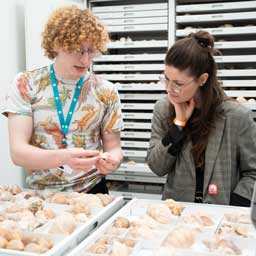In the Spring of my sophomore year of high school, I spent two months in Taiwan on a study abroad program. Towards the end of my stay, I left mainland Taiwan for the first time, and traveled southeast to the island of Lanyu. After a turbulent two-hour boat ride, I was relieved to set foot on dry land again, a sentiment shared by the other tourists pouring off the boat. I was struck by the natural beauty of the island, which contrasted with the neon lights, packed streets and tall buildings of Taipei. Being on Lanyu was like breathing fresh air again.
Excited to explore, I walked down the main road which encircles the island. Occasionally people on rented motorcycles would ride down the narrow dusty street, bordered by taro growing in the abandoned foundations of houses. Taro, along with flying fish, is an indigenous food staple for Tao people. Entering a village on the road, I noticed many shops selling souvenirs, clearly created for the tourists visiting the island. I had wanted to visit Ponso no Tao, which in Tao language means “Land of the Tao,” but was this really the “land of the tourist”?
When I had been in Taipei, most people hadn’t heard of Lanyu, or had never visited the island. Still, with a population of roughly 3,000 indigenous Tao people, the number of visiting tourists can quickly feel overwhelming. In 2020 the local government reported 313,166 arrivals to the island, dwarfing the island’s population. I could see how tourism on Lanyu could easily feel like an invasive presence.
Thinking about the significant presence of tourism on Lanyu, I asked Syaman Lamuran, the owner of Lamuran Guesthouse where I was staying and the head of the Tao Association, if he would be willing to speak with me about his experience on Lanyu. Fortunately, he generously agreed to talk to me. He told me the way some Tao people were participating in tourism by running guesthouses, hosting tours of the island, and taking people fishing and snorkeling, but others were less involved and opposed tourism. Syaman said that those opposed to tourism on the island didn’t ask people to stop making money from tourists, but they did express their dislike towards the presence of the visitors and their effect on Tao culture.
We spoke about Tao culture and cultural preservation amid the growing tourist onslaught on Lanyu. The issue is complicated. On one hand the Tao people want to continue Tao culture by incorporating and educating the younger generations without having to rely on tourism, however, the money tourism brings to the island undoubtedly benefits many of the Tao people. When discussing this issue, Syaman’s opinion is clear “culture is much more important” than making money.
The black, red, and white Tatalas, like the one in the Burke Museum, can be found in large numbers on the beaches of Lanyu, along with their cousin, the larger Jinedkaran. The Burke Tatala represents Tao culture in the museum, a culture whose future on Lanyu remains uncertain. Syaman believes that traditional Tao culture and the growing tourist industry must be balanced, but traditions and ceremonies of the Tao must be kept separate from tourism if Tao culture is to be properly respected and thrive.
It's unclear how tourism and culture will interact in the coming years, but Syaman has hopes for the future. In the same way that the Tatala is held in the Burke, Syaman would like to see a respectful, symbiotic relationship between his culture and those who wish to view and experience it. “I wish there would be a picture of Tao culture in the future, [where] we might see people coming [to Lanyu], just to feel the Tao world and Tao culture,” said Syaman.







